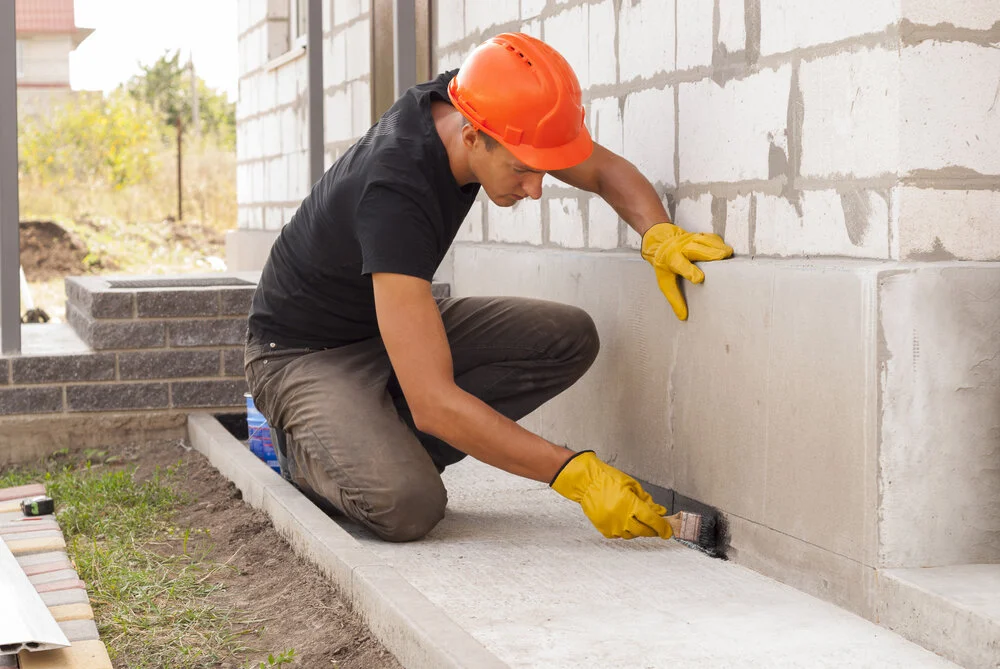Home Improvement
Foundation Repair: Understanding the Process, Problems, and Long-Term Solutions

Your home’s foundation is one of its most important structural components. It supports the entire weight of the building and helps keep everything level, aligned, and secure. When the foundation begins to shift, settle, or crack, it can create a ripple effect of damage throughout the structure. That’s why understanding the causes, symptoms, and solutions associated with foundation problems — and the importance of Foundation Repair — is critical for every homeowner.
This in-depth guide covers everything you need to know about foundation repair, including how to identify foundation damage, what methods are used to fix it, how much it typically costs, and how to prevent issues from recurring in the future.
Why Foundations Fail
Foundations are built to be strong and durable, but they aren’t immune to stress. Over time, a variety of environmental and structural factors can cause them to crack, settle unevenly, or become unstable. Here are some of the most common causes:
1. Soil Movement and Settlement
Most foundation problems begin with the soil underneath your home. If the soil is expansive clay, it will swell when wet and shrink when dry. This cycle creates pressure and movement, which stresses the foundation. Over time, this movement can lead to cracks and shifting.
2. Poor Drainage
Improper water drainage around the home allows water to pool near the foundation. This not only softens the soil but can also increase hydrostatic pressure, pushing against basement or crawl space walls.
3. Tree Roots
Large trees planted too close to the home can absorb moisture from the soil, causing it to shrink and shift. Roots can also physically intrude into the foundation, leading to cracks or displacement.
4. Construction Flaws
Foundations built on improperly compacted soil or without proper reinforcement are more likely to settle unevenly or fail over time. Inferior materials and shortcuts during the building phase can accelerate deterioration.
5. Plumbing Leaks
Leaks under a slab foundation can slowly erode the soil and weaken the foundation’s support system. Because these leaks are often hidden, damage can accumulate before it becomes obvious.
Warning Signs of Foundation Damage
Recognizing early signs of foundation damage can help prevent more costly repairs in the future. Here are the most common symptoms to watch for:
Interior Signs:
- Cracks in drywall, particularly around door and window frames
- Uneven or sloping floors
- Sticking or misaligned doors and windows
- Gaps between walls, ceilings, or flooring
- Separation of crown molding or baseboards
Exterior Signs:
- Cracks in the foundation walls or bricks
- Separation between bricks or exterior siding
- Sagging rooflines
- Gaps around exterior doors and windows
- Leaning chimneys or porch columns
If you notice any of these issues, it’s wise to consult a professional for an inspection. Early detection can reduce the scope and cost of Foundation Repair.
Types of Foundation Cracks and Their Meaning
Not all cracks are cause for alarm, but understanding their type and size can help determine if you’re facing a serious problem.
- Hairline Cracks: Typically surface-level and related to natural curing of concrete. Usually not structural.
- Vertical Cracks: Common and often caused by minor settling. These should be monitored for growth.
- Horizontal Cracks: Often indicate significant pressure against a wall and require immediate attention.
- Stair-Step Cracks: Found in block or brick foundations; usually a sign of settlement or movement.
- Diagonal Cracks: Often found near corners of windows or doors; can signal uneven settling.
Foundation Repair Methods
The repair strategy depends on the foundation type (slab, crawl space, basement), the type of damage, and soil conditions. Here are the most common methods used by professionals:
1. Slab Jacking (Mudjacking)
This process involves pumping a cement-like mixture beneath a sunken concrete slab to lift it back into place. It’s typically used for sidewalks, patios, and garage floors but may also be applied to slab foundations in certain conditions.
2. Piering or Underpinning
Steel piers or helical piers are driven deep into the ground to stabilize and support the foundation. This is one of the most reliable long-term solutions for homes experiencing settlement.
- Push Piers: Driven into bedrock or stable soil beneath the home.
- Helical Piers: Screw-like piers used in lighter structures or where deeper soil is unstable.
3. Wall Anchors
If foundation walls are bowing due to lateral pressure from soil or water, wall anchors are installed underground and connected to steel plates inside the basement. The system is gradually tightened to restore wall alignment.
4. Carbon Fiber Reinforcement
Used to repair small foundation wall cracks and prevent further movement. Carbon fiber strips are lightweight but incredibly strong, bonding to the wall with epoxy to add support.
5. Epoxy or Polyurethane Injections
For non-structural cracks, sealing with high-strength epoxy or flexible polyurethane foam can prevent moisture intrusion and stabilize the crack.
The Foundation Repair Process
The repair process generally follows several key steps:
Step 1: Inspection
A qualified foundation specialist or structural engineer assesses the damage, measures cracks, checks levels, and inspects the surrounding soil and drainage systems.
Step 2: Diagnosis and Proposal
The contractor identifies the problem’s source and provides a detailed repair plan with cost estimates and timelines. Be wary of contractors offering generic solutions without inspection.
Step 3: Permitting and Preparation
Depending on the repair type, permits may be required. The area is prepared for work, including excavation or clearing any obstructions.
Step 4: Repair Work
Technicians carry out the chosen repair method, whether it’s installing piers, anchoring walls, or sealing cracks. Most reputable repairs come with warranties lasting from 10 years to a lifetime.
Step 5: Clean-Up and Follow-Up
Once work is complete, the crew cleans the site, fills excavated areas, and re-tests the foundation’s stability. Some services include post-repair monitoring or annual inspections.
Cost of Foundation Repair
Foundation repair costs vary widely depending on the extent of the damage and the chosen method.
- Crack sealing: $500 – $1,500
- Slab jacking: $1,000 – $3,000
- Pier installation: $3,500 – $10,000+ (can increase with the number of piers)
- Wall anchors or carbon fiber: $3,000 – $7,000
- Full foundation replacement: $20,000 – $100,000+
While these prices may seem steep, neglecting foundation damage can lead to much higher costs down the road, including structural rebuilds or total foundation replacement.
Preventing Future Foundation Damage
While no home is completely immune to shifting soils and water intrusion, there are several steps you can take to minimize risk:
- Maintain Proper Drainage: Make sure gutters, downspouts, and grading direct water away from your foundation.
- Control Moisture Levels: During dry periods, water soil around the home to prevent shrinkage.
- Limit Tree Planting Near the House: Choose small or slow-growing trees, and plant them well away from the foundation.
- Check Plumbing Regularly: Early leak detection prevents erosion beneath slab foundations.
- Inspect Seasonally: Walk around your property at least twice a year and inspect for cracks, pooling water, or changes in alignment.
Preventive maintenance is a homeowner’s best line of defense against costly Foundation Repair.
Final Thoughts
Foundation damage isn’t just a cosmetic issue — it’s a structural one that can impact the safety, longevity, and value of your home. Recognizing the signs early and taking action quickly can make all the difference in repair costs and outcomes.
Whether your foundation has settled, shifted, cracked, or bowed, professional foundation repair can restore stability and give you peace of mind. Don’t delay repairs or dismiss early warning signs; what seems like a minor issue today can become a major problem tomorrow.















